Believe it or not, this is the title of a paper published in 2008 by two UCSD physicists. And whereas we aspire to have notable research results as well (hopefully a little more exciting than tangled string), we spent today continuing to plan, prep and unpack. Even scientists have mundane chores to do. First order of business....untangle this rope!
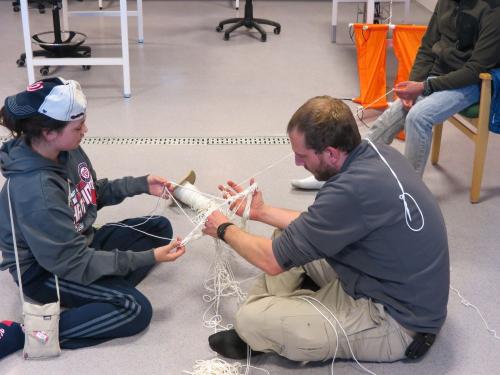 Jessica and Kean are working on this mess.
Jessica and Kean are working on this mess.
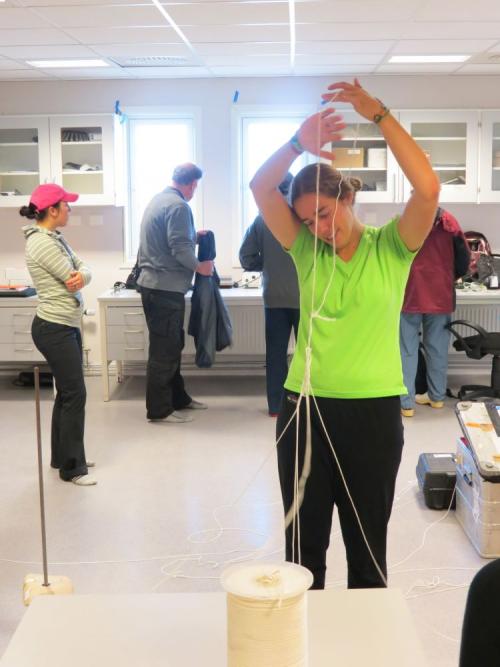 Courtney joined in. They did finally get it untangled.
Courtney joined in. They did finally get it untangled.
Meanwhile, I put my sewing skills to work making this drogue. The drogue will suspend in the water column at different depths and the current will carry it. By marking the visible buoy with GPS we can measure distance and calculate the current velocity of the water at that depth. One of the drogues already has a bag of rocks attached that will weigh it down and keep the line taut. We also have a current meter and will use both.
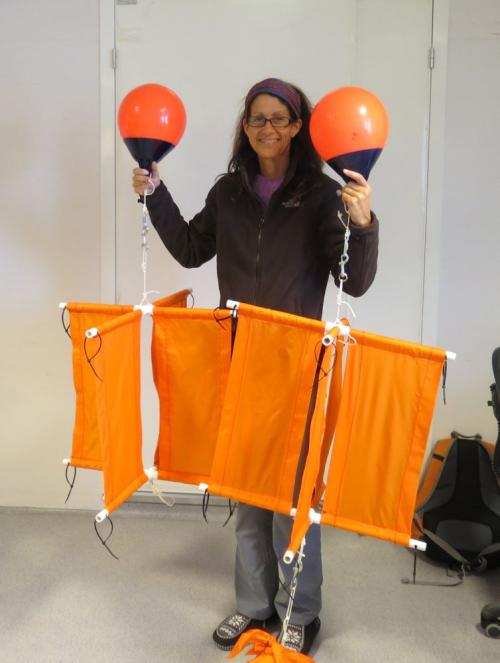 Drogue making is my new skill
Drogue making is my new skill
And then we all went for a polar bear ride.
 The Arctic is a really cool place. We got to ride polar bears! Created by Courtney Payne.
The Arctic is a really cool place. We got to ride polar bears! Created by Courtney Payne.
Take a Closer Look
Svalbard is the land of the midnight sun. The sun rose April 20 and will set August 23, meaning that I will not see night (at all) the whole time I am here. It seems many are concerned about me getting enough shut-eye, which is a real problem. Shelby H. from Los Coches Creek Middle School asks, "What time do you go to bed and wake up?" Emma, from Girl Scouts wants to know, "How bright is it at night and how can you fall asleep?" And Ryan S. from Brooklyn Prospect Charter School is wondering "How does the 24 hours of sunlight effect humans and animals?"
 What time do you go to bed and wake up?
What time do you go to bed and wake up?
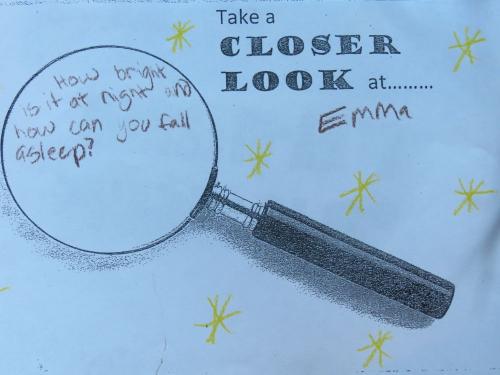 How bright is it at night and how can you fall asleep?
How bright is it at night and how can you fall asleep?
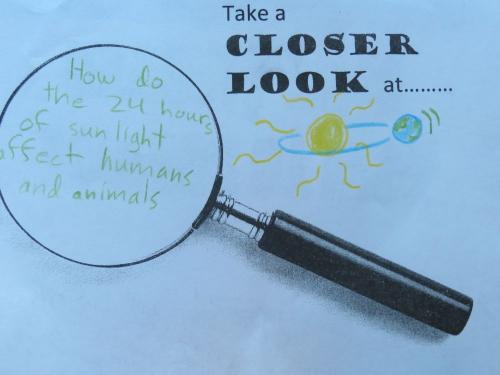 How do the 24 hours of sunlight efect humans and animals?
How do the 24 hours of sunlight efect humans and animals?
I've been going to bed between 10 PM to midnight, which is very late compared to when I am at home. The problem is, it is light out and it doesn't feel late so I just keep working. But, I wake up at really early times like 1 AM or 4 AM and before I look at the clock, I think it is morning and time to get up! Of course that is just my mind playing tricks on me. I sense that it is light out and so I think the whole night has gone by. It is actually quite annoying and is making me very exhausted. Here is a picture that I just took out the window of my room and it is 9:30 PM. And it won't get any darker than this all night long.
 This is a beautiful view to have out a room window, even it is 9:30 at night!
This is a beautiful view to have out a room window, even it is 9:30 at night!
I go to sleep by pulling the curtains and putting my head under the blanket. That makes it a little darker, but not really dark. In fact by 4 AM the sun position has changed and it is blazing away straight into this window. Sigh.....
How does 24 hours of sunlight effect me? It stinks and is really cool at the same time! Maybe I will get used to it. I hope so. The good news is that I am so excited about everything that unless I sit in a chair for awhile, I really don't notice how tired I am. But if I sit awhile I will start to fall asleep! Animals have a better time handling this. They are adapted to it. To read more about the circadian rhythms of arctic ground squirrels, I recommend the PolarTREC journals of my friend Andre Wille, which can be found here: http://www.polartrec.com/expeditions/arctic-ground-squirrel-studies-2014


Comments